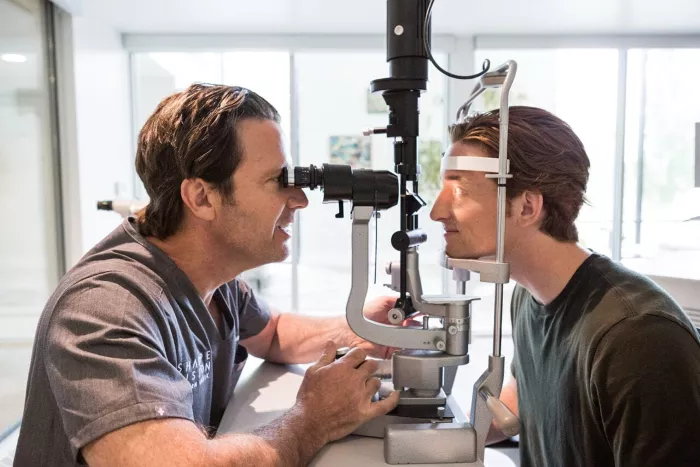Custom LASIK eye surgery is a modern vision correction procedure. It uses advanced technology to reshape the cornea for clearer eyesight. Unlike traditional LASIK, it maps the eye in detail for personalized treatment.
This guide explains how custom LASIK works, its benefits, risks, and who qualifies.
How Custom LASIK Differs From Standard LASIK
Standard LASIK follows a one-size-fits-all approach. The laser applies a uniform correction based on glasses or contact lens prescriptions.
Custom LASIK, also called wavefront-guided LASIK, goes further. It creates a 3D map of the eye, spotting tiny imperfections. The laser then adjusts its pattern for a more precise correction.
Key Differences:
Mapping Technology: Custom LASIK uses wavefront analysis to detect higher-order aberrations (subtle distortions).
Personalization: The laser treatment matches the eye’s unique shape.
Outcomes: Many patients see sharper vision, especially in low light.
The Custom LASIK Procedure Step by Step
1. Pre-Surgery Evaluation
An eye doctor checks if you’re a good candidate. Tests include:
- Corneal thickness measurement
- Pupil size evaluation
- Dry eye assessment
- Wavefront scanning
2. Creating the Corneal Map
A device called an aberrometer scans the eye. It measures how light travels through it, noting irregularities.
3. The Surgery
Numbing Drops: Ensure comfort during the procedure.
Flap Creation: A thin corneal flap is made (with a blade or laser).
Laser Reshaping: The excimer laser removes tissue based on the custom map.
Flap Repositioning: The flap is placed back to heal naturally.
The entire process takes about 15 minutes per eye.
Benefits of Custom LASIK
Sharper Vision – Reduces glare, halos, and blurry night vision.
Higher Precision – Corrects minor imperfections standard LASIK misses.
Lower Risk of Side Effects – Fewer issues with contrast sensitivity.
Faster Recovery – Many return to normal activities within a day.
Risks and Possible Side Effects
While safe, custom LASIK has some risks:
- Dry eyes (usually temporary)
- Mild glare or halos at night
- Undercorrection or overcorrection (rare)
- Flap complications (very rare)
Most side effects improve within weeks.
Who Is a Good Candidate?
Ideal candidates:
- Are over 18 with stable vision (no prescription changes for a year).
- Have healthy corneas (not too thin or irregular).
- Don’t have severe dry eye or other eye diseases.
- Have moderate nearsightedness, farsightedness, or astigmatism.
People with very high prescriptions or certain conditions may not qualify.
Recovery and Results
First 24 Hours: Rest, avoid screens, and use prescribed eye drops.
First Week: No swimming or rubbing the eyes.
Final Results: Most achieve 20/20 vision or better within weeks.
Many patients notice improved vision immediately. Full stabilization takes a few months.
Cost of Custom LASIK
Prices range from 2,000to3,500 per eye. Factors affecting cost:
- Surgeon’s experience
- Technology used
- Geographic location
Insurance usually doesn’t cover it, but financing options are available.
Custom LASIK vs. Other Procedures
PRK (Photorefractive Keratectomy)
- No flap creation (better for thin corneas).
- Longer recovery (up to a week).
SMILE (Small Incision Lenticule Extraction)
- Minimally invasive (smaller incision).
- Not as customizable as wavefront-guided LASIK.
ICL (Implantable Collamer Lens)
- Good for extreme prescriptions.
- Involves placing a lens inside the eye (reversible).
Choosing the Right Surgeon
Look for:
- Board certification in ophthalmology.
- Experience with custom LASIK.
- Positive patient reviews.
- Advanced laser technology.
A good surgeon will thoroughly assess your eyes and discuss realistic expectations.
Conclusion
Custom LASIK offers a tailored approach to vision correction. With higher precision than standard LASIK, it can improve clarity, especially in low-light conditions.
If you’re considering LASIK, consult an experienced eye surgeon. They can determine if custom LASIK is right for you.
Frequently Asked Questions
Is Custom LASIK Painful?
No—numbing drops prevent pain. Some feel slight pressure during the procedure.
How Long Does It Last?
Permanent for most, though age-related changes (like presbyopia) can occur later.
Can Both Eyes Be Done the Same Day?
Yes, most surgeons treat both eyes in one session.
What If I Move During the Procedure?
The laser tracks eye movements and adjusts automatically.
Related topics:
Is Retinal Detachment Surgery Painful?
Retina Pucker Surgery: What You Need to Know
Retinal Detachment Surgery Cost: What You Need to Know


